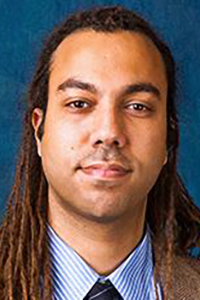
About
Michael Murrell is from the north side of Milwaukee, WI.
Education
- B.S., Biomedical Engineering, Johns Hopkins University
- Ph.D., Bioengineering, MIT
- Postdoc, Institut Curie/University of Chicago
Research Description
Living cells generate and transmit mechanical forces over diverse time-scales and length-scales to determine the dynamics of cell and tissue shape during homeostatic and pathological processes, from early embryonic development to cancer metastasis. These forces arise from the cell cytoskeleton, a scaffolding network of entangled protein polymers driven out-of-equilibrium by enzymes that convert chemical energy into mechanical work. However, how molecular interactions within the cytoskeleton lead to the accumulation of mechanical stresses that determine the dynamics of cell shape is unknown. Furthermore, how cellular interactions are subsequently modulated to determine the shape of the tissue is also unclear. To bridge these scales, our group uses a combination of experimental, computational and theoretical approaches. On the molecular scale, we use active nematic liquid crystals as a framework to understand how mechanical stresses are produced and transmitted within the cell cytoskeleton. On the scale of cells and tissues, we abstract these stresses to surface tensions in a liquid droplet and draw analogies between the dynamics of droplet wetting (and dewetting) and the shape dynamics of cells and simple tissues. Together, we develop comprehensive descriptions for how cytoskeletal stresses translate to the physical behaviors of cells and tissues with significant phenotypic outcomes such as wound healing and cancer metastasis.
Affiliations
- American Physical Society
- American Society for Cell Biology
Honors
- MIT Presidential Fellow
- NIH Biotechnology Training Grant
